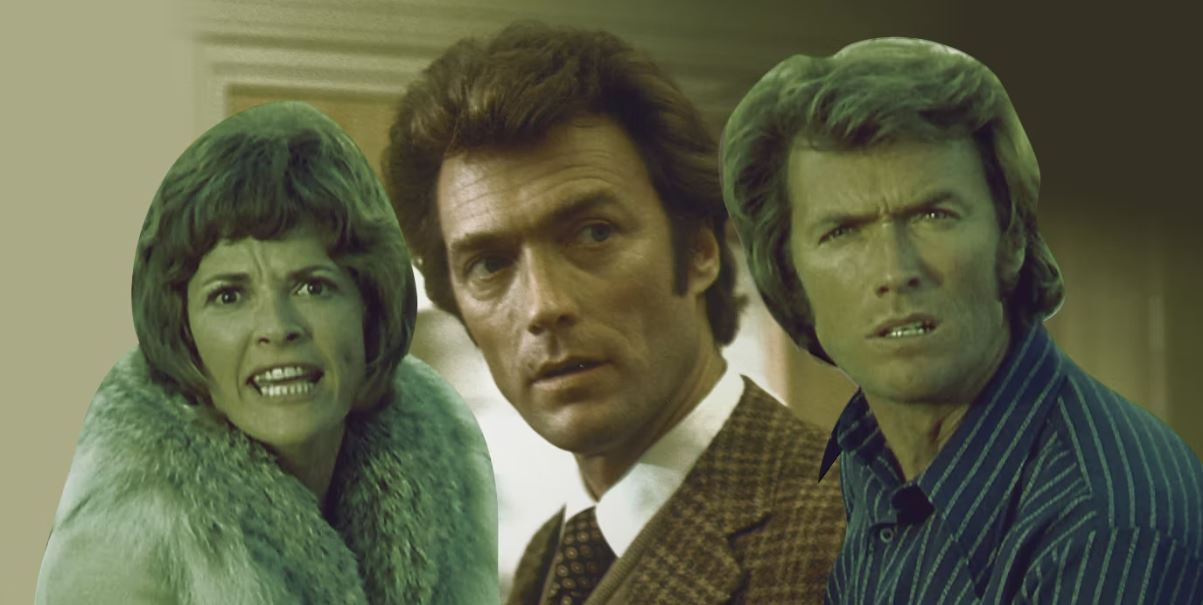Like virtually every actor in history who has turned to directing, Clint Eastwood was given the chance to make his feature directorial debut primarily because of his popularity as a star. To reduce the commercial risk for his first directorial outing, the always cost-conscious filmmaker agreed to direct and star in the film for a bare minimum salary. However, instead of choosing the commercial safety of the action genre for his feature directorial debut, Eastwood selected the psychological thriller Play Misty for Me, which was written by a woman, his longtime friend Jo Heims.
In Play Misty for Me, Eastwood plays Dave Garver, a womanizing late-night radio disc journey whose undemanding life is upended after Dave enters into a casual sexual relationship with a female fan, who exhibits increasingly psychotic behavior after Dave tries to end the relationship. In a stark departure from Eastwood’s trademark heroic screen archetype, Dave responds to this threat with a genuine sense of confusion and fear that turns into a quest for survival. As Dave’s mounting crisis envelopes seemingly every aspect of his once carefree bachelor life, Play Misty for Me becomes a chilling study of the horrifying extent to which one human being can terrorize another.
Play Misty for Me Is the Original Fatal Attraction
Play Misty for Me takes place in and around the beautiful coastal California city of Carmel, where the film’s director and star, Clint Eastwood, was elected Mayor in 1986. The film’s title refers to the Jazz standard “Misty,” which Eastwood’s jazz radio station disc jockey character, Dave Garver, plays at the request of a recurring female caller, Evelyn Draper, who follows Dave to his favorite bar, where she introduces herself. Later that night, Dave drives Evelyn to her house, where they sleep with each other.
By having a sexual relationship with Evelyn, Dave, like Michael Douglas’s Dan Gallagher character in the 1987 psychological thriller film Fatal Attraction, has a degree of culpability for the reign of terror that Evelyn unleashes following Dave’s rejection of her. Indeed, after their first casual encounter, Dave sleeps with Evelyn at least two times while recognizing the symptoms of her obsessive behavior, in which Evelyn believes that she must have Dave or die.

One of the most frightening aspects of Play Misty for Me is that Evelyn, as brilliantly played by Jessica Walter, is a mystery woman who seemingly has no family, no history, and no job. While the film’s original screenplay reveals that Evelyn spent time in a psych ward, Eastwood excised this information for the purpose of making the character’s development more surprising. By presenting Evelyn as a stalker without a past, the character takes the form of a malevolent presence, which falls into Dave’s life like a bomb.
Clint Eastwood Knows How to Scare Audiences
The economical approach that Clint Eastwood employed with his direction of the Play Misty for Me is emblematic of the efficient, straightforward approach that became the director’s imprimatur throughout the rest of his distinguished directorial career. Indeed, the overall format of Play Misty for Me, which the filmmaker made on a cheap budget of less than $1 million, is similar to that of a standard 1970s made-for-television thriller film. However, in its particulars, Play Misty for Me represents a frightening viewing experience.
With Play Misty for Me, Eastwood demonstrates an exquisite sense of timing and a thorough understanding of the art of creating suspense. The director, in a precursor to the technique that John Carpenter applied to Halloween, fills the seemingly ordinary daytime scenes in Play Misty for Me with a palpable sense of menace.
This is most evident in a sequence in which Eastwood’s Dave Garver and Dave’s girlfriend take a daytime walk along a beach and then through an adjacent forest. While the sequence looks and seems superficially innocent and pretty, there is an undercurrent of tension. Through the location’s remoteness and the onset of shadows, he projects the unsettling sense that terror could lurk anywhere.
Like Halloween, Eastwood also generates suspense in Play Misty for Me through misdirection and surprise. After Dave’s stalker, Evelyn, has been granted parole after being committed to a psychiatric hospital for nearly fatally stabbing Dave’s housekeeper, Evelyn calls Dave from a payphone, ostensibly from outside an airport in San Francisco, to tell Dave that she intends to move to Hawaii to begin a new life. However, that night, Dave awakens in his bed to discover that Evelyn has broken into his house and is poised to stab him with a very long knife.

Play Misty for Me Deserves Comparison With Psycho
While Clint Eastwood’s Play Misty for Me certainly isn’t the artistic equal of Alfred Hitchcock’s immortal 1960 horror film Psycho, Eastwood, like Hitchcock, clearly takes enjoyment in, to quote Hitchcock, playing the audience like a piano. Moreover, Play Misty for Me, like Psycho, generates considerable suspense and terror by featuring a villain who, like Norman Bates in Psycho, is completely insane and, therefore, capable of anything.
Play Misty for Me pays homage to Psycho, specifically in terms of the scene in Psycho in which private detective Milton Arbogast enters the Bates house and ascends the stairs to find Norman’s mother, only to be stabbed to death. In Play Misty for Me, a police detective, after driving out to the home of Dave’s girlfriend for a welfare check, is similarly lunged at and then stabbed to death with a pair of scissors.
This scene, like the staircase scene in Psycho, generates tension due to the audience’s expectation that something bad will happen. By stringing out the audience in terms of the exact moment when the killer strikes, the scene takes the form of a ticking time bomb. Like Hitchcock, Eastwood has the audience eating out of the palm of his director’s hand. Play Misty for Me is streaming on Netflix.
